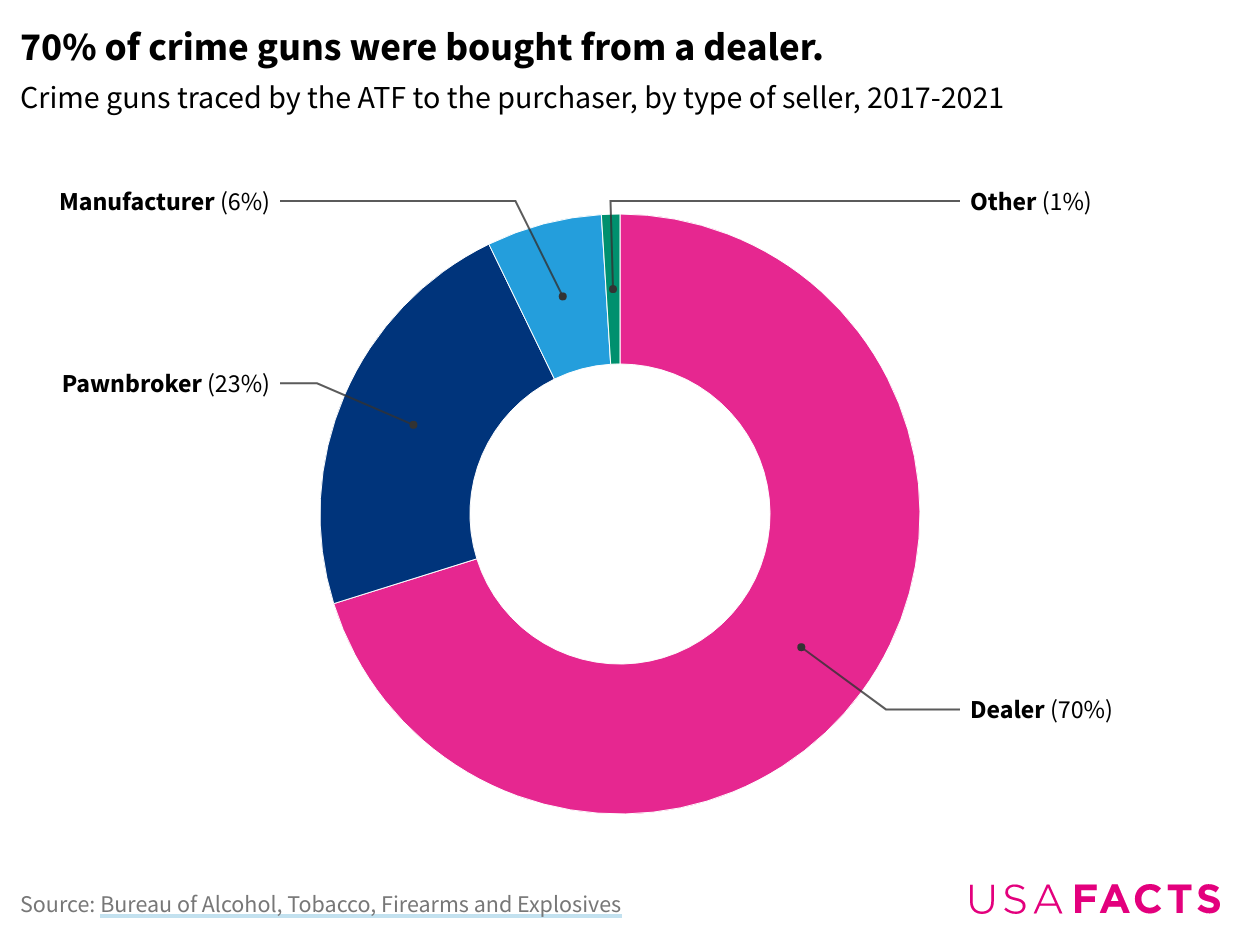A report from the Bureau of Alcohol, Tobacco, Firearms and Explosives (ATF) reveals that traced crime guns — guns later used in crimes — that originated from gun shows increased by 19% from 2017 to 2021. It also reveals that 99% of traced crime guns were initially obtained from a dealer, pawnbroker, or gun manufacturer. Here’s a look at how gun show sales have rebounded after the pandemic and where people buy guns for crimes.
Crime guns bought at gun shows are on the rise
Traced crime guns bought from gun shows increased 19% from 2017 (7,612) to 2021 (9,089). Both dealers with a federal firearm license (FFL) and unlicensed individuals alike may sell firearms at gun shows.
All FFL dealers must conduct a background check to to verify that a potential buyer does not have a criminal record before completing a firearm transfer. FFL dealers must document and report their gun show transactions to the ATF. Unlicensed individuals don’t have such federal requirements. Five states — Connecticut, Colorado, Illinois, New York, and Oregon — require background checks between individuals at gun shows.
Roughly 42,000, or 3%, of the 1.5 million crime guns traced by the ATF between 2017 to 2021 were obtained at gun shows. However, because this percentage counts guns sold by FFL holders, not those sold by unlicensed individuals, it is an underestimate.
Federal law does not require unlicensed individuals keep gun show sales records or conduct background checks. Unlicensed vendors can sell guns at gun shows as long as they do so as a hobby and not for their livelihood.
Because transactions between individuals at gun shows remain largely unregulated, national data on these gun transfers is unavailable.
Most traced crime guns come from dealers
From 2017 to 2021, 70% of crime guns traced by the ATF were obtained from a dealer, which is defined by law as anyone in the business of selling or repairing firearms. Dealers can be retail businesses or wholesale suppliers.
Twenty-three percent of crime guns were acquired from a pawnbroker. A pawnbroker offers a quick loan in exchange for a valuable such as jewelry or a gun. If the borrower can't repay on time, the pawnbroker keeps the item. As a result, pawn shops often have guns for sale at lower prices.
Six percent of crime guns were bought from a gun manufacturer.

Gun trace requests from law enforcement agencies increased from 338,000 in 2017 to 460,000 in 2021, up 36%.
The number of traced crime guns bought from dealers increased over 30% during this time. Traced crime guns bought from pawnbrokers increased 78%, while traced crime guns bought from manufacturers increased by approximately 150%.
For a fuller picture of crime in the US, read about who buys the guns used in crimes and get more USAFacts data in your inbox by subscribing to our weekly newsletter.
Keep exploring
Page sources and methodology
All of the data on the page was sourced directly from government agencies. The analysis and final review was performed by USAFacts.
Bureau of Alcohol, Tobacco, Firearms and Explosives
PART III: Crime Guns Recovered and Traced Within the United States and Its Territories